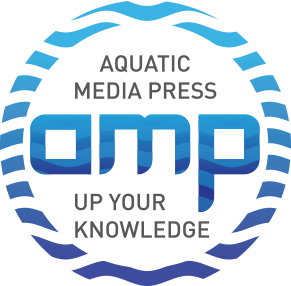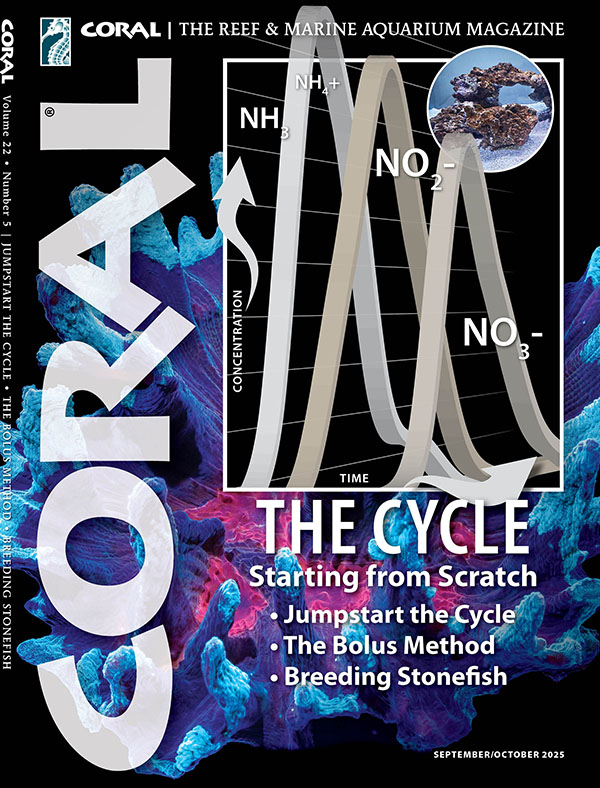
CORAL Magazine Issue Review: THE CYCLE – Volume 22, Issue 5. SEPTEMBER/OCTOBER 2025
by Toygar Niron
founder of the Turkish-language marine aquarium website N Akvarium
Some stories need to be rewritten. The September/October 2025 issue of CORAL Magazine does just that. Put aside everything you think you know about the cycling process and learn what causes the bad things that happen to you. You’ll probably dream of a fresh start, just like me.
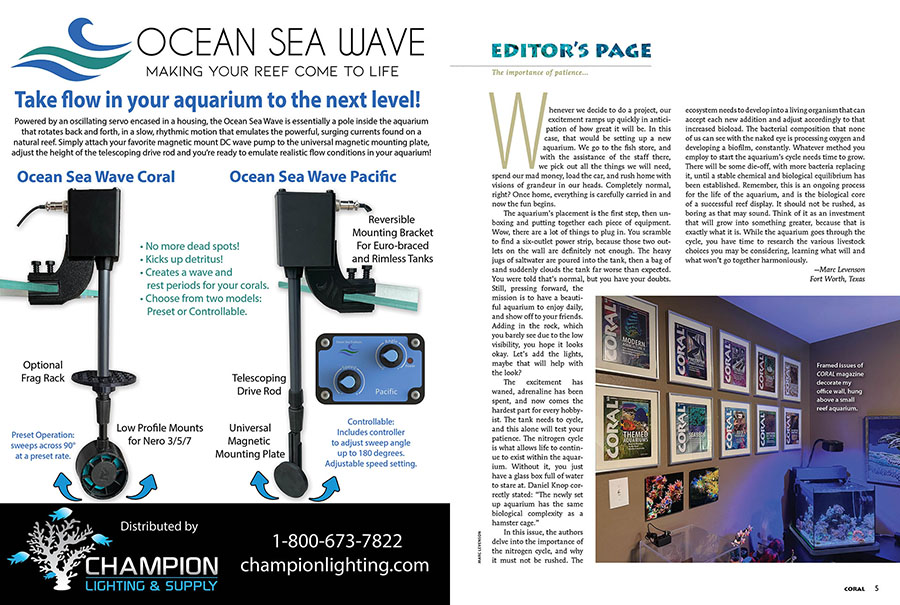
Editor’s Page
Setting up a new aquarium is exciting for anyone. For Marc Levenson, the exciting process begins at a pet store filled with fish and corals; all the necessary equipment is purchased, loaded into the car, and on the drive home, dreams of the aquarium’s magnificent appearance begin. But when you arrive, the boxes are unpacked and you suddenly realize there aren’t enough outlets, the aquarium water is cloudy, and everything is scattered everywhere. This is a bit of a letdown.
Levenson reminds us of Daniel Knop‘s analogy: “A newly set-up aquarium is biologically no different from a hamster cage.” Hamster lovers, please don’t take offense… We understand the inherent difficulties of keeping hamsters.
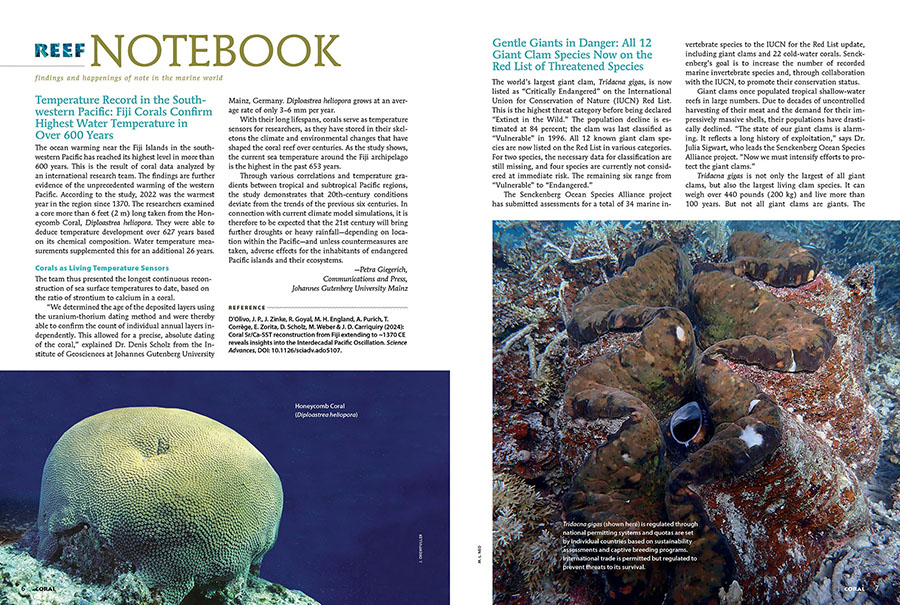
Reef Notebook
This issue’s reef notebook presents stories from four different authors and four unique topics.
Petra Giegerich describes data from Fiji corals revealing that ocean temperatures in the region have reached their highest level in 653 years. The study warns of increased drought and extreme rainfall in the Pacific during the 21st century.
Judith Jördens says all 12 species of giant clams are now on the IUCN Red List. The largest species, Tridacna gigas, has been declared Critically Endangered with an 84% population loss. Uncontrolled hunting and the shell trade threaten giant clams with extinction, and the Senckenberg Ocean Species Alliance says they aim to accelerate conservation efforts by adding these species, along with cold-water corals, to the list.
New research shows that local climate conditions are the most critical factor in the development of Loggerhead Sea Turtles (Caretta caretta), which also have spawning grounds along the Turkish coast. Oliver Häußler explains that Loggerhead Sea Turtles are born smaller but heavier during periods of heavy rainfall, while Green Sea Turtles (Chelonia mydas) are born with larger shells. In his article, he emphasizes the importance of considering regional climate data for the success of conservation efforts.
Marc Levenson reports on the success of Reef Retreat 2025, a new education-focused aquarium conference held in Rhode Island. Organized after MASNA, the event brought together 150 participants on campus for three days to learn about microbiomes, reef chemistry, coral reproduction, and diseases. Levenson notes that the conference united scientists, hobbyists, and industry representatives, and the 2026 event is expected to sell out quickly.
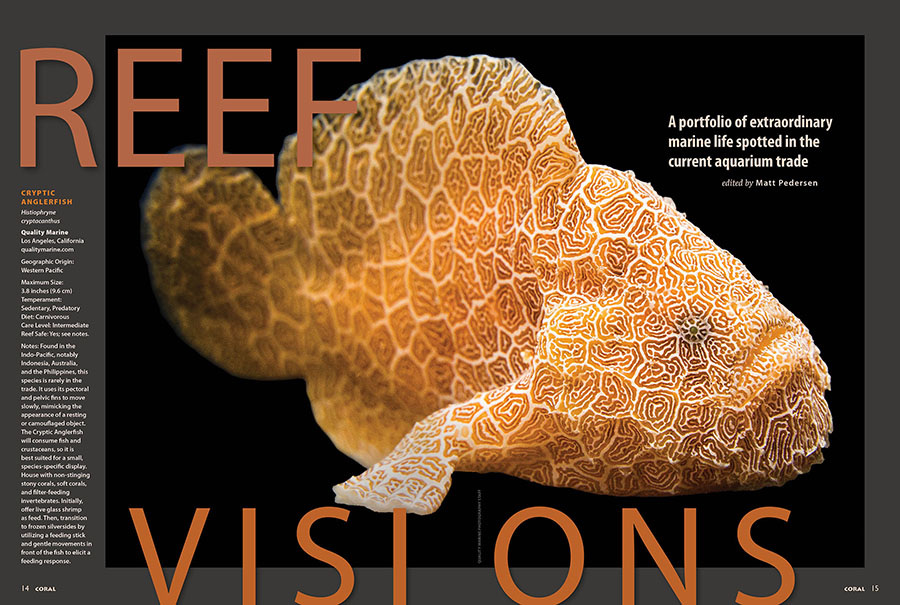
Reef Visions
Matt Pedersen has assembled a collection of submissions documenting eight different species of fish and coral rarely seen in the aquarium industry. I can say that most of the species in this section I’ve never seen alive. While visually appealing, these species, which require specialized care, truly enrich the aquarium hobby. As my close circle can tell, my favorite is the Frozen Volcano Pectinia. What about yours?
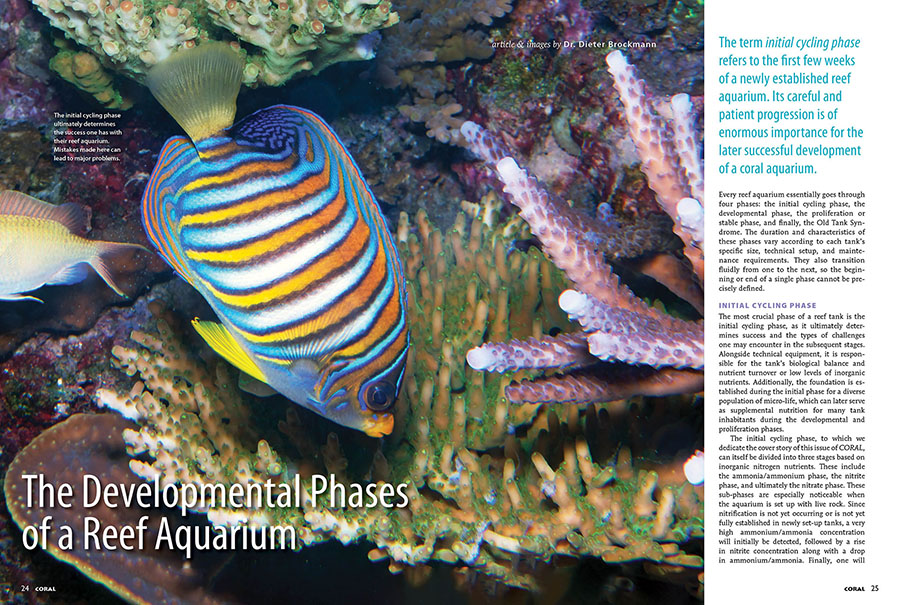
The Developmental Phase of the Reef Aquarium
In his article, Dr. Dieter Brockmann discusses the developmental process of coral aquariums in four main phases and examines each stage in detail.
- Initial Cycling Phase
- Developmental Phase
- Proliferation Or Stable Phase
- Old Tank Syndrome
According to Brockmann, the initial cycling phase is the most critical stage that determines the future success of the aquarium. During this period, the aquarium’s biological balance is established, the nutrient cycle is regulated, and the foundations of micro-life are laid. The process goes through the stages of ammonium, nitrite, and nitrate; once these transformations are completed, the initial cycling phase comes to an end. He also notes that this process can vary depending on the aquarium’s setup, the type of rock and equipment used, and may last an unpredictable length of time.
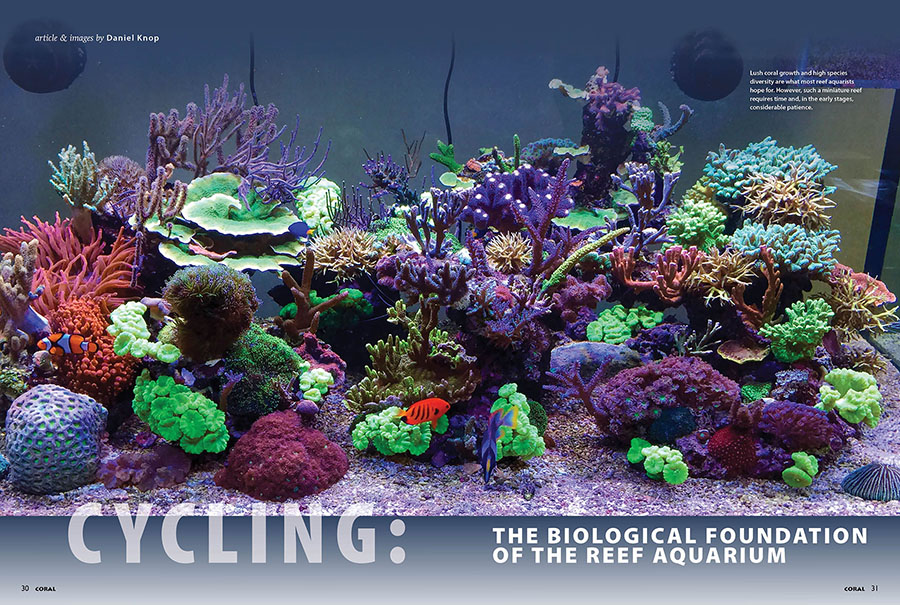
Cycling: The Biological Foundation Of The Reef Aquarium
Daniel Knop emphasizes the biological foundations of a reef aquarium and the importance of the setup phase, particularly the “cycling phase.” He points out that this process is not merely a waiting period, but rather the stage in which the natural balances necessary for an aquarium to become a healthy and complex ecosystem are established. Knop explains that a wrong start—such as adding fish and corals before the aquarium is biologically matured—can lead to uncontrollable algae blooms and nutrient imbalances within the ecosystem.
Knop details three different methods for creating a successful cycle in a reef aquarium: the Traditional Method, the Sterile Rock Method, and the Still Water Method. For detailed information on each method, look no further than the September/October 2025 issue of CORAL Magazine.
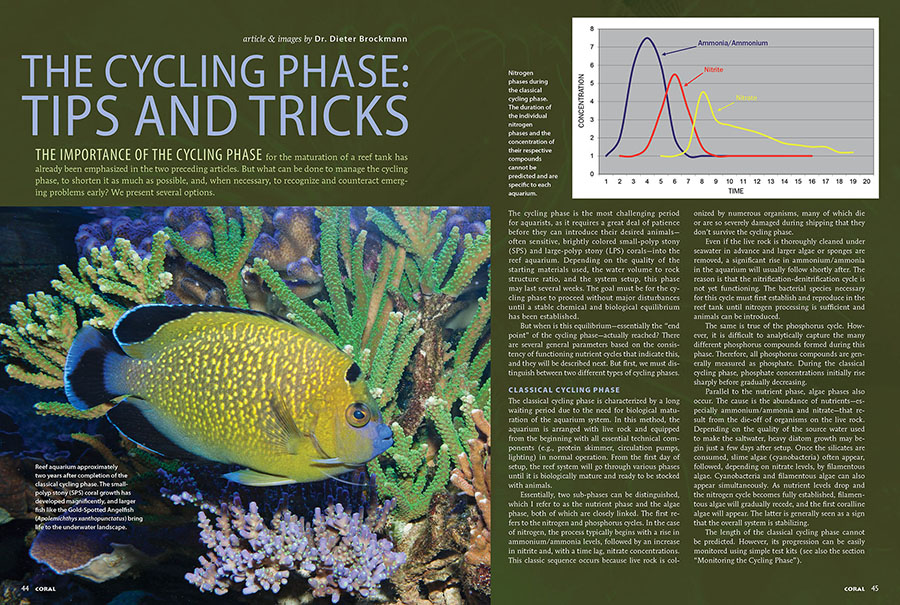
The Cycling Phase: Tips And Tricks
When I first started reading this article by Dr. Dieter Brockmann, many experienced aquarists like me might have asked, “What could possibly be new about the cycling process?” However, as you continue reading this fascinating topic, and after Marc Levenson’s little tip, I’m sure you’ll find yourself thinking, “I just thought I understood the cycling process.”
Dr. Dieter Brockmann also offers practical suggestions for monitoring and accelerating the cycling phase. Chemically, he recommends the use of reverse osmosis (RO/DI) water and phosphate removers to keep nutrient levels under control, while biologically, he advises adding bacterial supplements or seeding from a mature aquarium. Brockmann emphasizes that balance can be achieved during this process by introducing algae grazers (such as snails and sea urchins) and hardy fish species. The article also notes that the use of antibiotics can harm beneficial bacteria, and that major decoration changes in an established aquarium can reset the system.
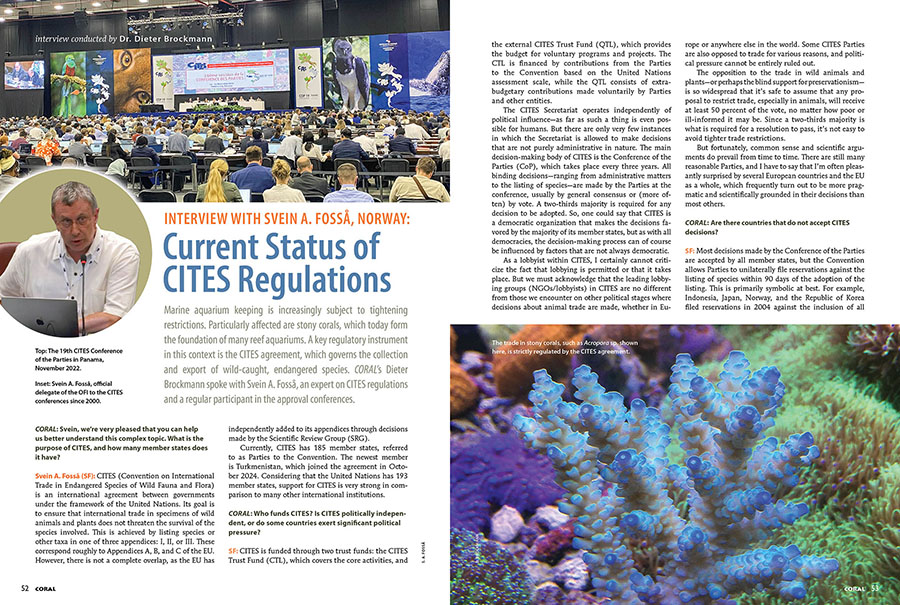
Current Status Of CITES Regulations
Svein A. Fosså, an expert on the regulations of the Convention on International Trade in Endangered Species of Wild Fauna and Flora (CITES), which was most recently joined by Turkmenistan in 2024 and has been adopted by 185 countries, including Turkey, answers Dr. Dieter Brockmann’s questions in the September 2025 issue of CORAL Magazine.
Svein A. Fosså emphasizes the growing importance of captive-bred species in marine aquaristics. The interview addresses the ethical aspects of this transition and highlights that trade should also benefit both local communities and nature in the countries of origin. Finally, it points out that future regulations may become even stricter, making cooperation among all stakeholders vital for sustainable trade.
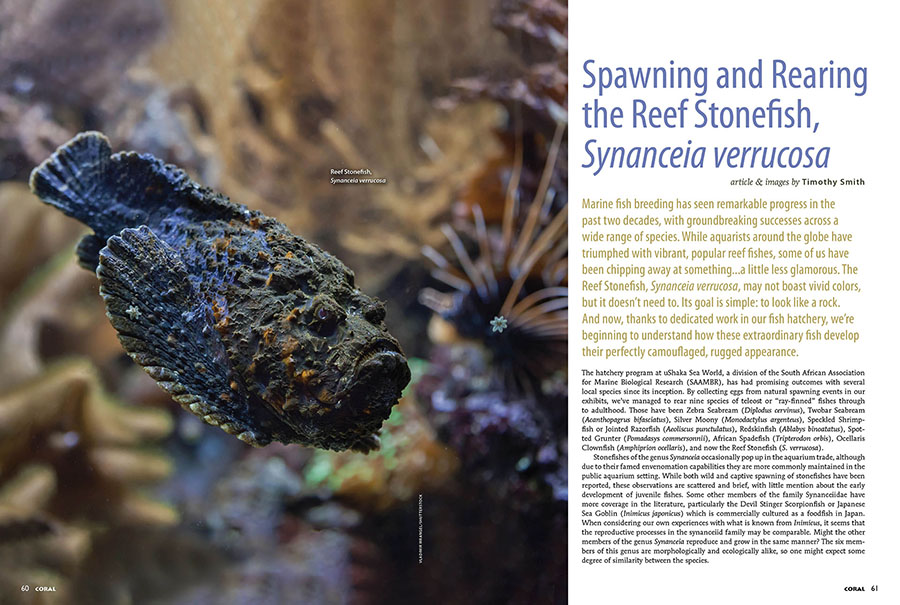
Spawning and Rearing The Reef Stonefish, Synanceia verrucosa
This article describes the success of spawning and rearing the Reef Stonefish (Synanceia verrucosa) in a hatchery program at uShaka Marine World. Timothy Smith notes that this fish is distinguished by its camouflage abilities rather than aesthetics, and explains in detail how a species with limited knowledge of its reproductive biology was successfully reared in a closed system.
This comprehensive article demonstrates that the Reef Stonefish can be added to the list of sustainably produced marine fish.
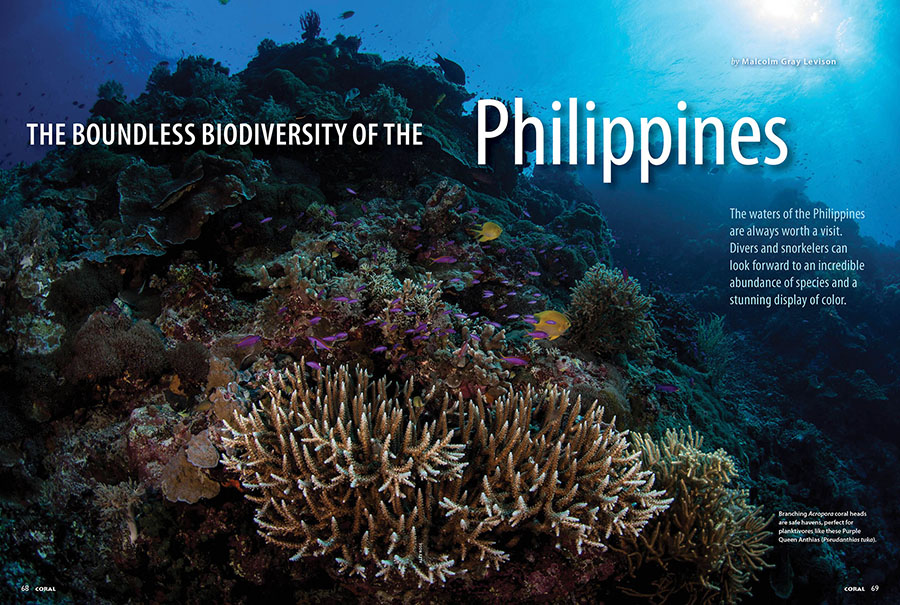
The Boundless Biodiversity Of The Philippines
Malcolm Gray Levison examines the unique marine biodiversity of the Philippines’ Coral Triangle and why it’s a paradise for divers. The article focuses on the dive-rich islands of Bohol and Negros Oriental in the Central Visayas region, and Puerto Galera, part of the Verde Island Passage.
If you’d like to plan this journey, backed by Malcolm Gray Levison‘s stunning visuals, travel tips on visa requirements, accommodation, and diving costs await you in the September/October 2025 issue of CORAL Magazine.
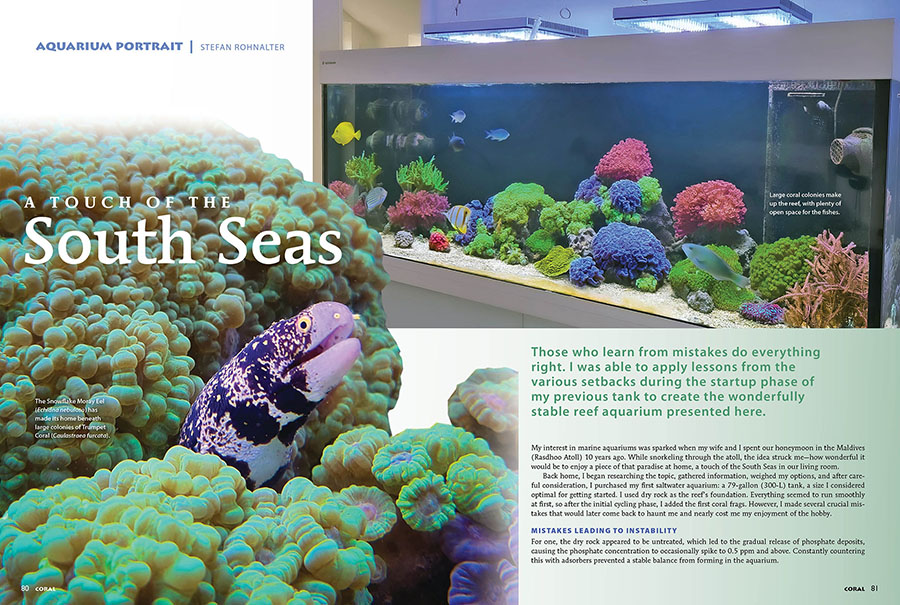
Aquarium Portrait: A Touch Of The South Seas
Stefan Rohnalter from Weibersbrunn, Germany, on the aquarium portrait, touches upon this issue’s topic, explaining the mistakes he made during the cycle of his aquarium, the lessons he learned from these mistakes, and how he continued to grow more consciously and knowledgeably without giving up.
Stefan Rohnalter emphasized that this successful experience, patience, accurate knowledge, and respect for living creatures are the keys to success in the saltwater aquarium hobby.
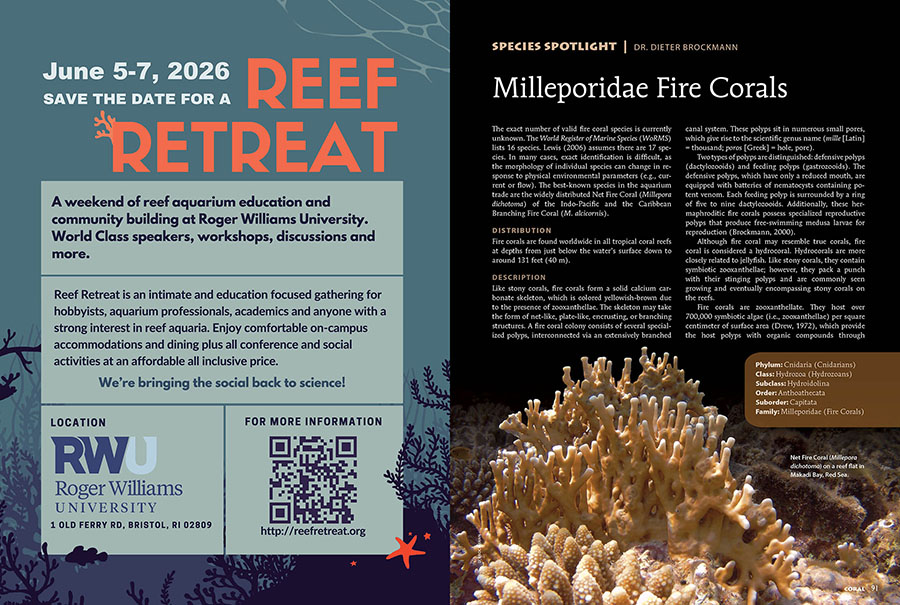
Species Spotlight
Dr. Dieter Brockmann examines the Fire Corals (Milleporidae), a group of species commonly found in the aquarium trade and named after their stinging cells. He shares that these species are not true corals but hydrozoans with calcium carbonate skeletons.
Brockmann also offers practical information on how to care for and maintain fire corals in your aquarium. These species can be easily propagated by taking small pieces from the colony, but it’s worth noting that fire corals are listed on CITES Appendix II.
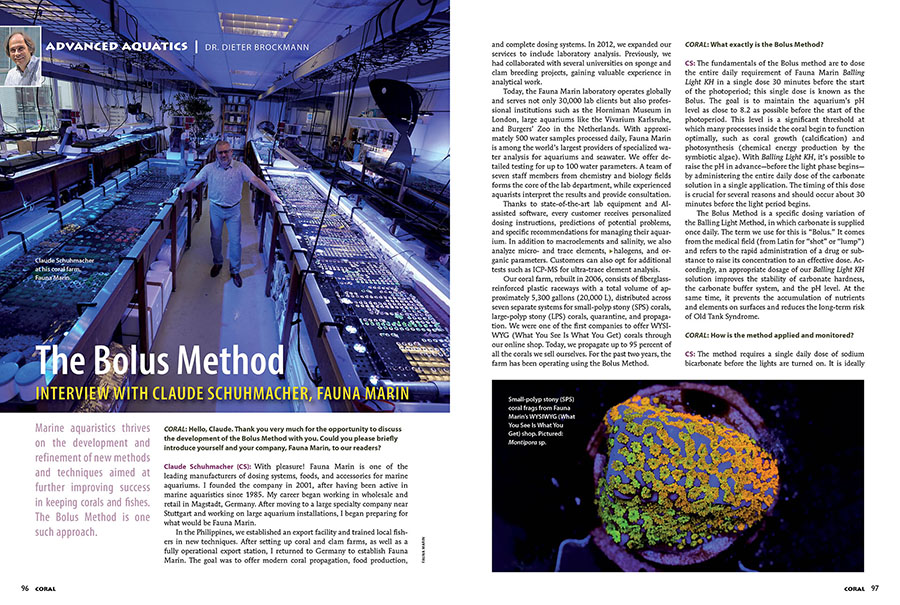
Advanced Aquatics
If you’re ready, I’d like to introduce you to a new method that will be the subject of much debate in the future: the “Bolus Method.” This interview focuses on the innovative method developed by Claude Schuhmacher, founder of Fauna Marin, for coral care in marine aquaculture.
Schuhmacher states that the biggest benefit of this method is that it creates a safer and more stable environment for corals. It minimizes pH fluctuations and supports the aquarium’s natural buffer system, helping maintain carbonate hardness and promoting healthy coral growth and coloration. The simple dosing process makes the hobby more accessible to both novice and experienced aquarists, allowing users to enjoy their aquariums. Find everything you need to know about this new method in the September/October 2025 issue of CORAL Magazine.
In Summary
CORAL Magazine is one of the world’s leading print publications for the saltwater aquarium industry. If you’d like to subscribe and read all the content, you can start your subscription here.
If you have read the CORAL Magazine September/October 2025 issue, please share your opinions and evaluations about this issue with us and other aquarists in the comments section below.
Editor’s Note: You can see the original Turkish-language version of Niron’s review at https://nakvaryum.com/dongu-coral-dergisi-eylul-ekim-2025/


